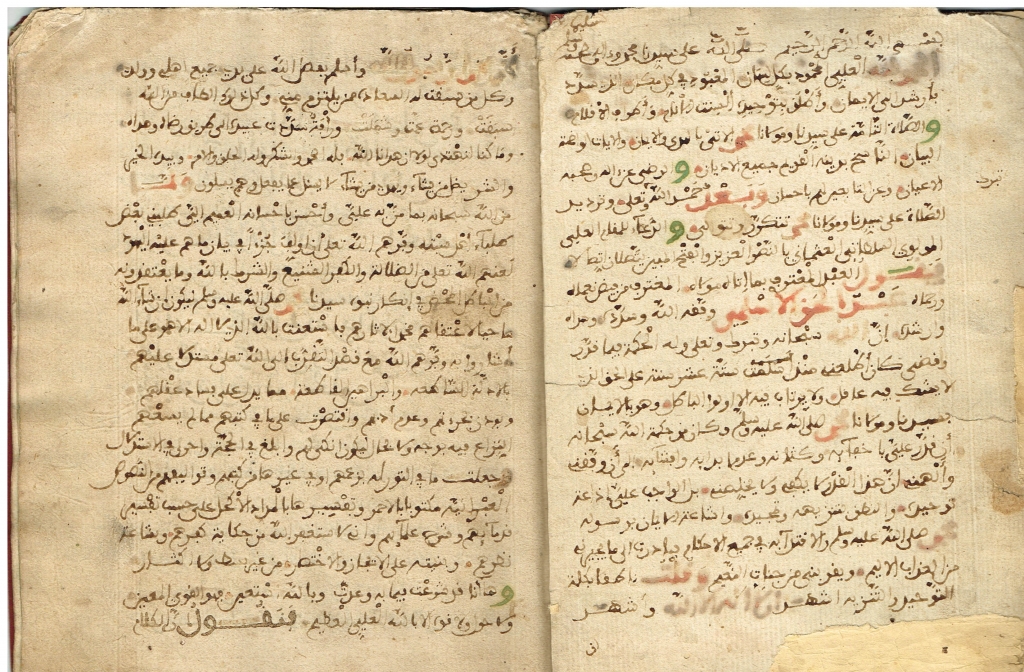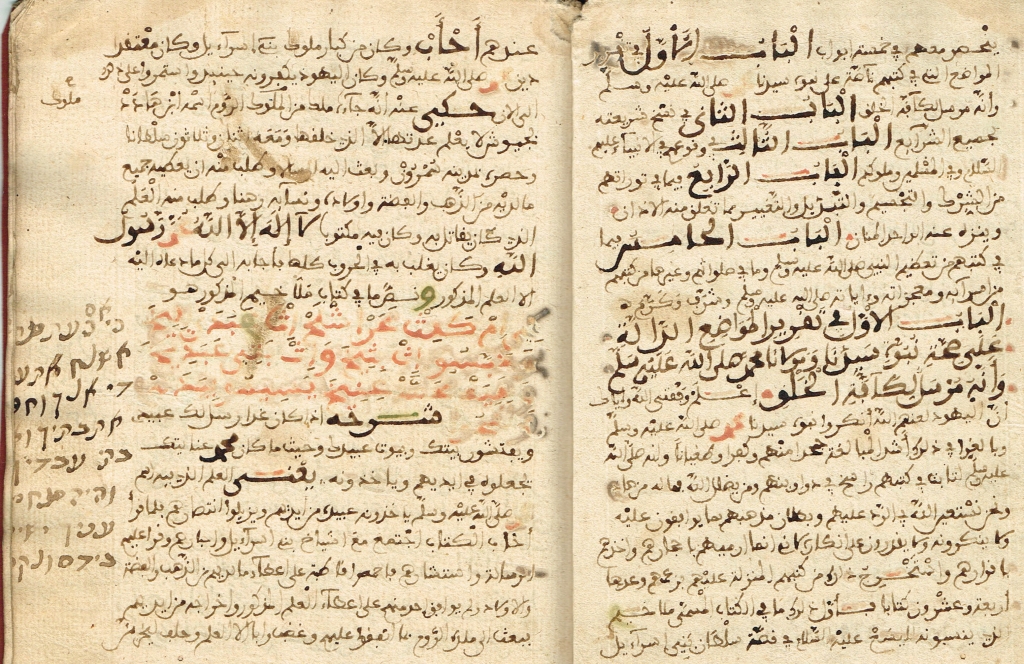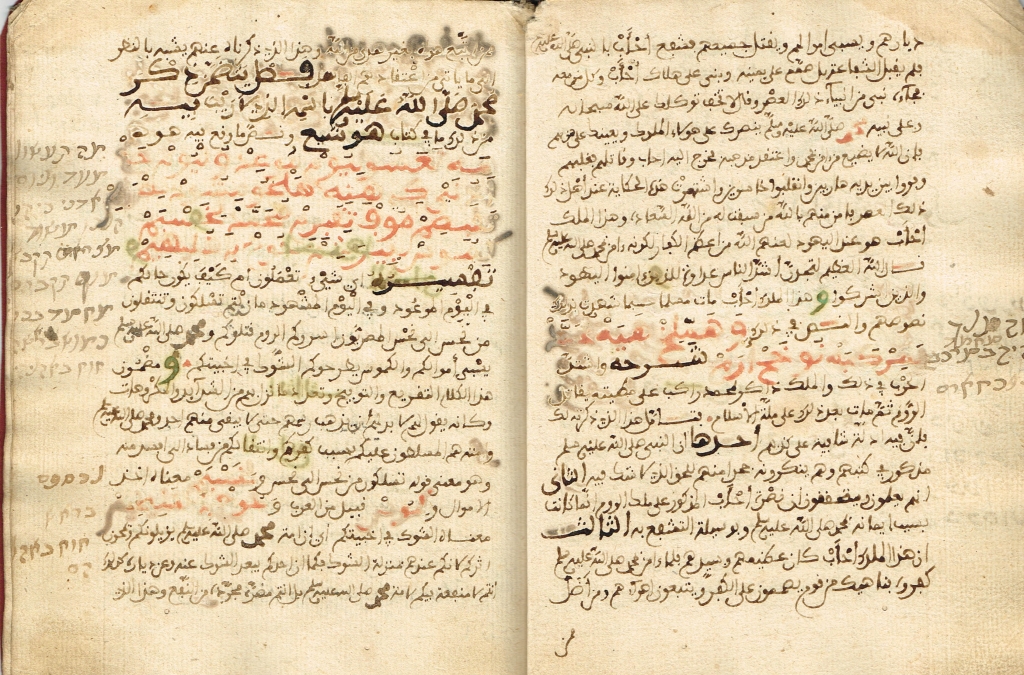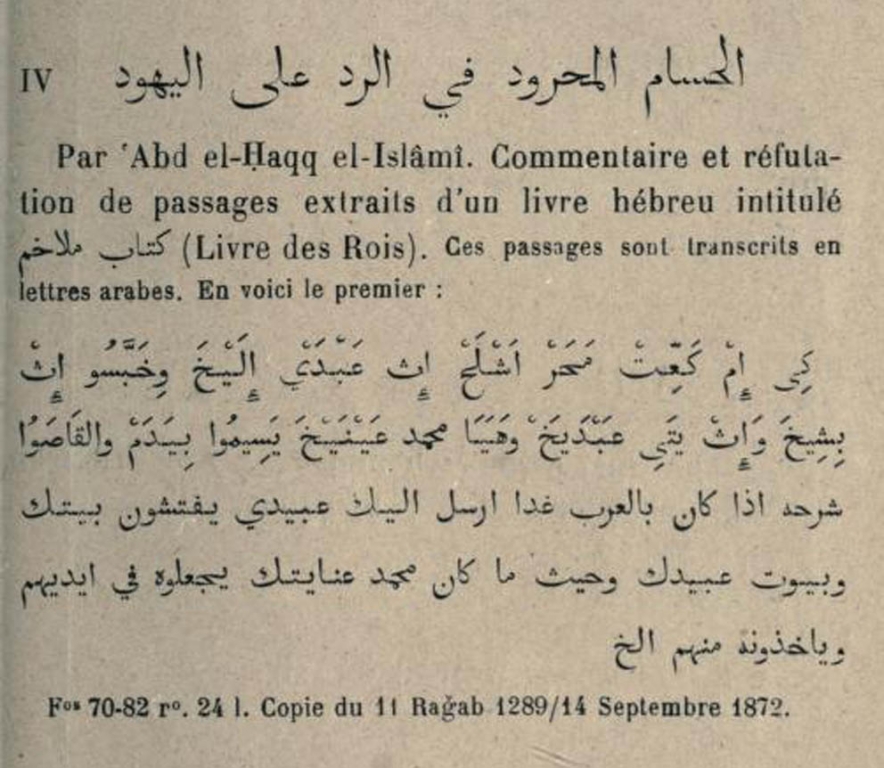TEXTE D'UN JUIF CONVERTI À L'ISLAM QUI FAIT UNE CRITIQUE SUR LA RELIGION JUIVE
Ibn Mohammed Abdelhaq el Islami
| Numéro d'objet: |
30765 |
| Date: |
XVIe |
| Genre: |
Livre Manuscrit |
| Lieu: |
Maroc |
| Sujet: |
Antisémitisme |
Recherche dans "Notes":
Le texte est écrit en arabe écriture noire et l'écriture rouge = arabe mais quand il est lu c'est de la langue hébraïque qui correspond à l'hébreu qui est écrit en marge du texte.
L'auteur arabe parle du Prophète Mohammed et démontre qu'il est un véritable prophète et qu'il est destiné à remplacer la Torah, il est le dernier des prophètes et le Coran est le dernier livre de la prophétie, créé par dieu.
By M. PERLMANN
The following is the result of a study of an anti-Jewish pamphlet written by 'Abd al-Halkkd al-Islmi, a Jewish
convert to Islam, in Morocco, apparently in the fourteenth century. The British Museum possesses two copies of the manuscript tract. They are: A) Add. 9660, Cat. II,
p. 295, No. 623, pp. lllb-131a, and B) Add. 9567, Cat.
II, p. 335, No. 735, pp. 134-175a.
The former was written in 1203 H./1789, in a fine script, while the latter was written somewhat earlier, in 1151 H./1740, in a coarse hand. The library of Rabat possesses the same tract
(Levi-Provencal - Les Manuscrits Arabes de Rabat, p. 259,
No. 529, IV); the Ms. was produced in 1289/1872.
The tract was reproduced in lithography, apparently in the first years of the century (Sarkis' Mu'jam, col. 1272), in the form of a booklet of 24 pages (pagination 1-8 repeated
three times).'
The fact that recently use was still being made of the pamphlet proves not only the vitality of mediaeval
controversies in the towns of Morocco, but also seems to
bear witness to a certain amount of renown enjoyed for centuries by the tract, though in one country only, in
circles concerned with religious disputations. The B. M. manuscripts differ slightly in numerous details. Ms. B preserves a better text, which is strikingly demonstrated on p. 119 of Ms. A, where a Hebrew quotation is abruptly interrupted, whereas B brings it in full with indication of the source. There are also some substantial differences, especially at the beginning and at the end of the pamphlet. Some passages had been transposed, i. e., occur in different
connections in the Mss. A whole passage of argument, including a Hebrew quotation, is to be found in B only. One perceives also that the older B text does not show as much keenness for eulogies as the later version in Ms. A. It stands to reason that the differences arose out of wide
use, and they may reflect insertions made in older Mss. by the author. The Rabat Ms. and the lithography give,
generally speaking, the same text as the older Ms. B of B. M. In the B. M. Mss. the tract bears no name at all.
The Rabat Ms. is entitled. The author of the work is Abu-Mubammad 'Abd al-Hakk al-lslami.







